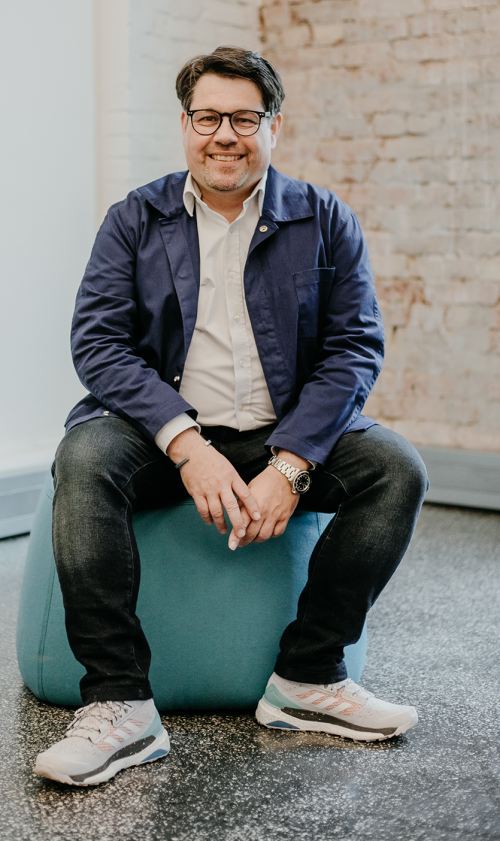If you want to see where premium packaging is heading, look to Japan, advises Uwe Melichar, founder of Melichar Bros. (Brothers & Sisters). “Japan is where many packaging trends start. A lot of the inspiration is coming from the Japanese tradition of making a gift and it’s there I find the roots of ‘less is more’ and nice carton constructions for premium packaging,” says Melichar, who is also the President of the European Brand & Packaging Design Association (EPDA), has served as a jury member on the prestigious Red Dot design award panel and is a member of the Type Directors Club New York.
Over the years, the perception of premium has changed in regards to typography, as with so much else. “For a long time serif fonts have been leading in the premium segment,” says Melichar. “Today, nearly all premium brands have moved from their unique logotypes to interchangeable lettering.”
”Sustainability is a big topic and one of the things that has changed in recent years. Consumers want a brand to have a purpose and think and act responsibly for production and CSR-related things.”
Melichar’s career in packaging began with an internship at Germany’s Hamburg-based FACTOR in 1995, where he later became a managing partner. His first client was the C&A clothing giant and he set about to redesign the company’s brand and logo typeface and then took on the company’s packaging with some 4,000 SKUs. Over the years, Melichar’s interest in 3D constructions and materials grew and packaging became his area of expertise.

In January 2020, Melichar started Melichar Bros. (Brothers & Sisters), an agencyfocused on sustainable packaging. His circularity mission goes hand in hand with a growing trend for premium brands to use sustainable packaging. This is something consumers expect from a premium brand today, he says.
“Sustainability is a big topic and one of the things that has changed in recent years. Consumers want a brand to have a purpose and think and act responsibly for production and CSR-related things,” says Melichar, adding that fibre-based packaging has even more relevance today.
“Consumers are looking for certificates such as FSC or biodegradable materials. Fine paper, natural and rich surfaces are key." Premium brands are using such materials to enhance their storytelling as well, he adds.
Consumers also expect a dialogue and to be heard by the brand. Engaging in dialogue with customers is quite a change from the past, Melichar adds, when the attitude from premium brands was to distance themselves from their target groups. “A certain distance still needs to be there so you look up to a premium brand but now, companies like Burberry for example, have changed their business models. They know everything about their customers including likes, dislikes, size and fit, and their customers appreciate that.”
A sense of community is also key to premium brands. “Brands like Chanel are creating a desire for consumers to become a part of their community. Wear the Chanel bag and you are a part of the Chanel world,” says Melichar. “When people go with a brand they automatically express that they are in line with the same values.”
”About five years ago, Bombay Sapphire printed electronics inside their package so it would glow from within. That was fancy five years ago but today you would not see that as premium packaging.”
Premium brands today are interacting with consumers not only through their products, but also through experiences. This is something that resonates particularly well with certain consumers, says Melichar. “Younger people are generally not as interested in the real values such as if a product is made of the fanciest material or with the best craftsmanship. Value is created by limiting [availability of] the product, creating a special experience, or being seen with a certain brand. It is more important for them that they can connect with the brand and be a part of the brand story.”
And although traditional premium characteristics still apply in some parts of the world, Melichar notes a shift away from “glossy, rich and bling bling” attributes to a more understated tone that has taken place in most of the developed or western world.
“About five years ago, Bombay Sapphire printed electronics inside their package so it would glow from within. That was fancy five years ago but today you would not see that as premium packaging. The package was eye-catching but the electronics didn’t add value,” he says.
Today’s codes are “more discreet and mysterious,” he says, highlighting Chanel’s new bottle lids made from renewable fibre as an example. The wood fibre material wouldn’t have matched the Chanel brand values in the past he points out. “Now we are in transition and this is a change with a movement towards more natural materials and aesthetics. You find this throughout all price levels but it starts with premium brands because they are first to adopt new materials and innovations.”

